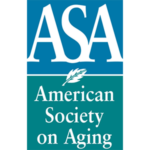
September 4, 2019
By Bruce Chernof, Shelley Lyford and Christopher Langston
On June 10, 2019, California Gov. Gavin Newsom issued Executive Order N-14-19, calling for a California Master Plan for Aging (Master Plan). In his Executive Order, Newsom outlines the broad framework for a Master Plan process, including state-level input, stakeholder engagement and a firm deadline of October 1, 2020, for completion.
The process is well underway, and voters—nearly half of whom are providing care, or have provided care to an older adult or person with a disability—are READY. A survey —commissioned by the nonpartisan campaign We Stand With Seniors and conducted in July showed that more than 75 percent of voters support Gov. Newsom’s Executive Order and will hold the state accountable. This crosses political parties and geographic regions, is nearly identical across all age groups and is high among those with differing ethnic backgrounds.
The significance of the Executive Order cannot be understated: at no time in the past has a California governor committed leadership and resources to whole-scale systems planning to meet the needs of California’s aging population. As heads of three organizations that have steadfastly dedicated their time to educating California’s policymakers on the critical need for a Master Plan, we applaud Gov. Newsom for his visionary leadership and expedient, aggressive goals for creating and implementing a Master Plan. This marks a historic milestone on the road to overcoming system-related challenges facing older Californians and meeting their needs through a thoughtful, comprehensive and outcomes-oriented strategy.
While a major first step, the Master Plan is only one stride on the long path ahead. To succeed, California’s Master Plan must have a singular focus: to design systems to answer the needs and experiences of older adults and the families who stand by them, now and into the foreseeable future. A successful Master Plan will anticipate and respond to needs from a human perspective, engaging both public and private sectors in systems-based solutions that touch all major areas of life experience (e.g., health, human services, housing, transportation and more).
Instead of a traditional planning exercise that prioritizes the needs of a currently fragmented system, this Master Plan can reframe system organization, funding and service delivery, based on what matters most to the people the plan serves—placing older Californians, their families and their caregivers at its center.
Five Critical Elements of the Master Plan
The SCAN Foundation, West Health and Archstone Foundation uphold the following five elements as critical to the Master Plan’s success, ensuring that it fully reflects what matters most to older Californians and their families.
Older Adults Thriving = Health, Finances, Self-Worth, Environment and Community. Californians’ ability to thrive while aging with dignity and independence reflects the intersection of basic human needs, such as health (physical, psychological and social well-being); finances (financial well-being); self-worth (purpose and empowerment); environment (supportive services, housing, food and transportation); and community (family and friends).
A successful Master Plan will recognize the interdependence of these needs and develop approaches that recognize and address all of them.
People First. Older adults should have access to systems that are responsive to the individual as a whole—not idiosyncratic system parts based on their funding source, the administering agency or the local oversight entity. A successful Master Plan will ensure that individuals can readily access the information and services they need, when they need them—regardless of eligibility distinction, income level or place of residence.
Cross-Sector Collaboration. It is time for aging issues to be addressed outside the traditional spheres of health and human services, or as solely the responsibility of the state or public sector. Many state agencies—along with a wide range of private entities—contribute greatly to the experience of aging in California; these entities include housing, transportation, higher education and veterans affairs, among others.
All stakeholders need to be equally engaged, with strong leadership from the governor to ensure a holistic solution to California’s infrastructure and care system challenges. A successful Master Plan will establish a framework that draws in new partners and spurs collaborative innovation across public, private and independent sectors. This will mean equal accountability for all entities to creatively and comprehensively address California’s aging population’s needs, through a sound financing structure, now and into the future.

